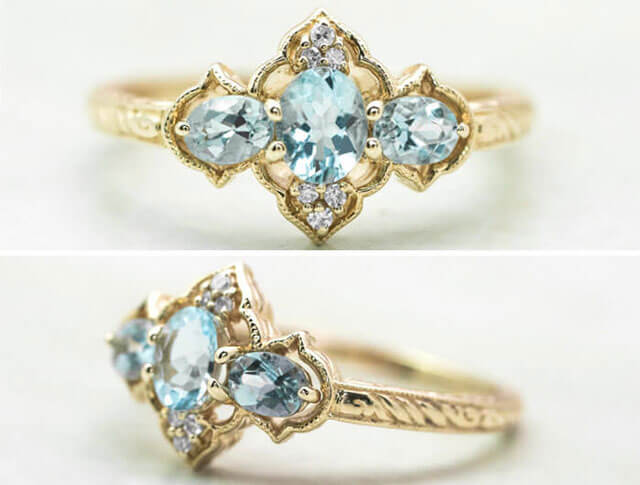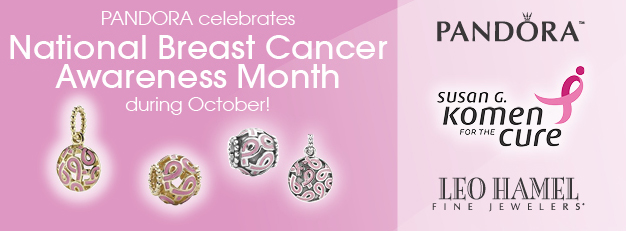How Gemstones Derive Their Color: the Science Behind the Beauty!
Gemstones have been used for personal adornment by most cultures the world over going back for centuries. Gems were sometimes also used as currency or even tools, and are used today in various industrial applications, as well as set in jewelry. Diamonds, for instance, are made into in drills and saws that are used for cutting glass, granite, marble, and other hard materials (only about ¼ of all diamonds that are mined are used in fine jewelry).
One of the most amazing aspects of gems lies in their vast diversity. There are hundreds of varieties of gemstones, both natural and manmade, and each possesses different properties of size, shape, luster, and hardness. Probably the most apparent—and sometimes most important—is the color. Let’s learn just how gemstones derive their many colors.
Understanding Light
In order to understand the way gemstones display their many magnificent colors we must first appreciate certain aspects of the light that brings them to life.
Light is actually electromagnetic radiation that vibrates at certain wavelengths. However, the human eye can only perceive wavelengths between 380 and 750 nanometers. This is the range of the visible color spectrum: red, orange, yellow, green, blue, and purple, as well as all the colors in between.
If all of the many wavelengths of light passed through a gemstone, it would appear colorless to us. If the gemstone actually absorbed all of that light, it would appear completely black. If a stone absorbs all the wavelengths except those in, say, the blue spectrum, the gem will appear blue.
Absorbing Light
There are numerous reasons as to why a gemstone might absorb light differently. In some cases gemstones are idiochromatic, or self-colored, which means they absorb certain wavelengths of light based on physical characteristics and/or chemical structure. Peridot, for instance, contains iron, which causes it to appear only in shades of green.
However, idiochromatic stones are rare. Most gemstones are colored by various impurities or trace elements in their physical structure. These gemstones are allochromatic.
As an example, let’s take corundum. Pure corundum is actually colorless. However, when a corundum stone contains traces of chromium, it will appear red. Traces of titanium make the stone show blue. In the professional world of gems and jewelry, the former is known as the ruby, while the latter is known as the sapphire.
Trace Elements
Some common trace elements found in gemstones include:
- Beryllium (emerald)
- Copper (malachite, turquoise, paraiba tourmaline)
- Iron (aquamarine, chrysoberl, citrine, green tourmaline, jade, yellow sapphire)
- Lithium (green tourmaline, pink tourmaline)
- Manganese (kunzite, morganite, pink tourmaline, spessartite garnet)
- Titanium (sapphire)
- Vanadium (alexandrite, emerald, color-changing sapphire)
One thing you should notice is that color and chemical impurity are not so easily related. As you can see, both beryllium and vanadium create the green of an emerald. Other times, a single trace element, like iron, is responsible for different colors in different gem varieties.
What we do with gemstones after they are pulled from the ground also affects their amazing color and striking appearance. Gemstones are relatively unattractive when initially mined. The beauty is there; it just requires the attentions of a skilled gemstone cutter to release it. Cutting, carving, and polishing allow light to pass through, bringing out the vibrant color and brilliance of the gemstone.
Most colored gemstones on the market today are treated in some fashion to enhance their color or clarity. Most of these treatments are permanent and do not damage the gem, and sometimes even make it more durable. Heat treatments are commonly used to change the chemical structure of an impurity, thus deepening or lightening the gem’s color. Heat can reduce certain less desireable hues, such as the green tones in aquamarine, or improve overall clarity.
Color and Value
The most precious and pricey gemstones are the deepest and richest in color. Emeralds, for instance, are created in many different hues of green, but the most esteemed shade is an intense bluish-green. Sapphires appear in almost every color of the rainbow including pink, green, yellow, violet, and even clear, but the richest blue can be the most treasured color. However, there are no red sapphires, because a “red sapphire” is called a ruby!
Gemstones of all hues, tones, and saturations of color both light and dark can be enchanting, especially if the gemstone boasts a lively cut. Ultimately the “best” color for any gemstone is the shade that most pleases the beholder! Whether in pale ghostly tones or dark drenched hues, gemstones exhibit a splendor and allure that is all their own.



